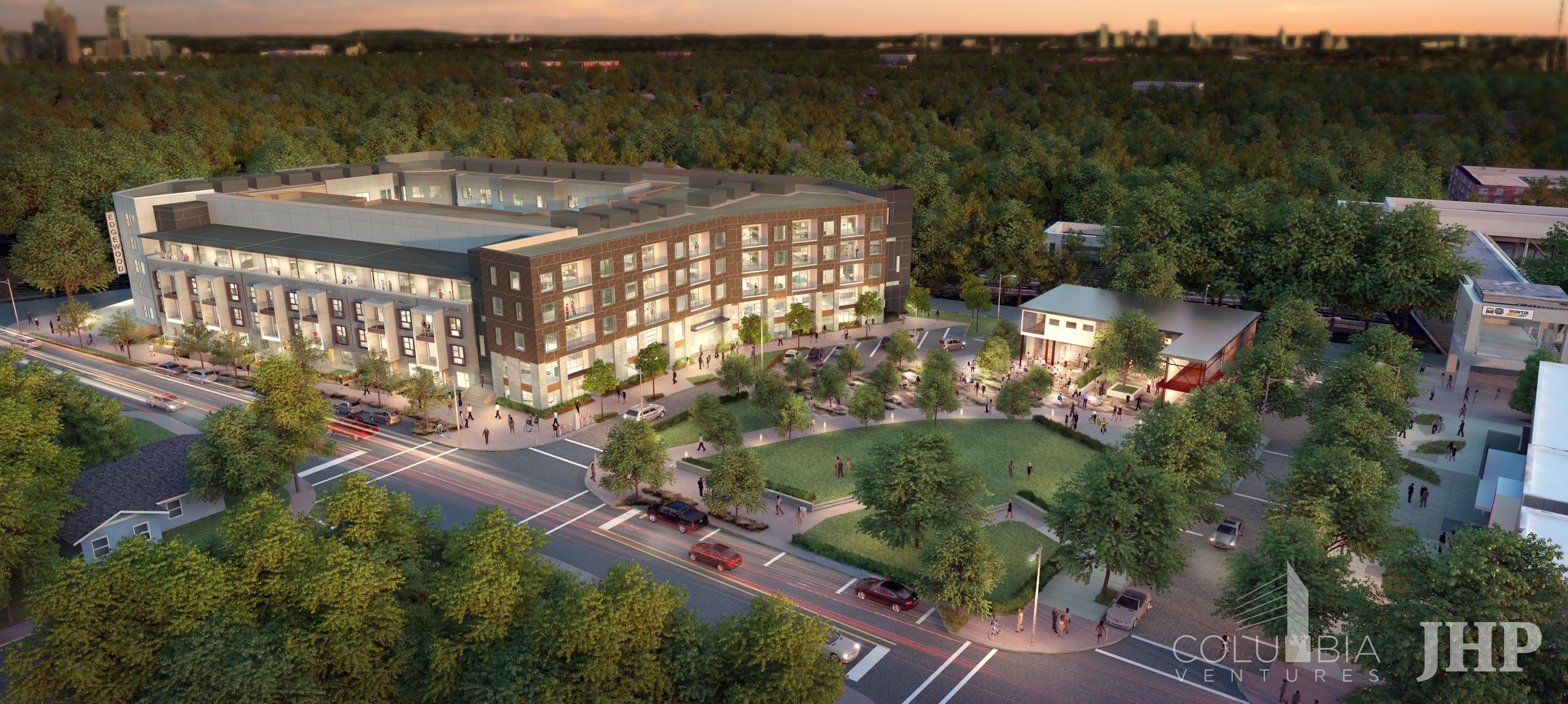"MARTA Breaks Ground On First Transit-Development Project," by Tasnim Shamma, Summary:
The article starts with the ground breaking of MARTA’s “‘transit-oriented developments'" (Shamma) at Edgewood-Candler Park. The project was sponsored by a private developer who poured 40$ million dollars into the project; MARTA did not have to pay a single cent. The development will feature apartments, restaurants and even a theater; basically a living complex that centers around MARTA’s Edgewood-Candler Park station, for ease of access. The article then introduces a native to Edgewood, Eric Kronberg, and his interactions with his neighbors on ideas for the area, a vision they have been working on for well over a decade. The ground breaking has left him speechless, he described it as a kind of thing "...you don't even wish for because you don't believe it's possible." (Shamma) The development hopes to increase density capacity so that it can accommodate new ridership. Ridership, compared to last year statistics, is low. General manager Keith Parker however, expects things to pick up again describing it as only a "matter of time" (Shamma).
This development anticipates the return of old members, as well as new patrons; an outcome MARTA is pretty confident in. With the building where it is, and the function it serves, people will be "'...right here to ride our services '" (Shamma). Expected to finish by the end of 2017, Amanda Rhein, senior director of the transit-oriented development, focuses on the other 5 locations where such developments will take place; for a total of 6. The article then briefly mentions the other location and their readability for work. According to Rhein, there are still a lot to figure out, but they have contact with a development partner they wish to work with, and have a good grasp on the projects.
Shamma, Tasnim. "MARTA Breaks Ground On First Transit-Development Project." 90.1 FM WABE –<br>
Atlanta's NPR Station. NPR, 23 Aug. 2016. Web. 31 Aug. 2016.
 In the article, "Placemaking on Main Street: Revitalizing Rural Communities," it is asserted that implementing simple projects such as local parks, benches, and sidewalks can influence a community to get out on the streets and influences the social constructs of the community. Take the Reflection Pool for instance, pictured above.
Project for Public Spaces. "Placemaking on Main Street: Revitalizing Our Rural Places." Project for Public Spaces. N.p., 12 Aug. 2016. Web. 31 Aug. 2016.
In the article, "Placemaking on Main Street: Revitalizing Rural Communities," it is asserted that implementing simple projects such as local parks, benches, and sidewalks can influence a community to get out on the streets and influences the social constructs of the community. Take the Reflection Pool for instance, pictured above.
Project for Public Spaces. "Placemaking on Main Street: Revitalizing Our Rural Places." Project for Public Spaces. N.p., 12 Aug. 2016. Web. 31 Aug. 2016. Image Credit: (“SpokeEdgewoodCandlerPark.jpg (JPEG Image, 2400 × 1078 Pixels) - Scaled (53%).” N.p., n.d. Web. 6 Sept. 2016.)
Image Credit: (“SpokeEdgewoodCandlerPark.jpg (JPEG Image, 2400 × 1078 Pixels) - Scaled (53%).” N.p., n.d. Web. 6 Sept. 2016.) -This is a chart taken from the article "The morbid and mortal toll of sprawl."
Steuteville, Robert. "The Morbid and Mortal Toll of Sprawl." CNU. N.p., 26 Aug. 2016. Web. 31 Aug. 2016.
-This is a chart taken from the article "The morbid and mortal toll of sprawl."
Steuteville, Robert. "The Morbid and Mortal Toll of Sprawl." CNU. N.p., 26 Aug. 2016. Web. 31 Aug. 2016. Most people, for example, would not document that they visit a community park often or that they walk to and from work, but in looking at the sidewalks and parks and benches or lack of these things, it can be determined if a certain community does these things or not.<br>
Project for Public Spaces. "Placemaking on Main Street: Revitalizing Our Rural Places." Project for Public Spaces. N.p., 12 Aug. 2016. Web. 31 Aug. 2016.
“Bucharest, June The 1St 2015, Crowded Park On A Summer Afternoon, Heat Wave, Family Time, People Having Fun Stock Footage Video 10439756 - Shutterstock.” Accessed September 6, 2016.
Most people, for example, would not document that they visit a community park often or that they walk to and from work, but in looking at the sidewalks and parks and benches or lack of these things, it can be determined if a certain community does these things or not.<br>
Project for Public Spaces. "Placemaking on Main Street: Revitalizing Our Rural Places." Project for Public Spaces. N.p., 12 Aug. 2016. Web. 31 Aug. 2016.
“Bucharest, June The 1St 2015, Crowded Park On A Summer Afternoon, Heat Wave, Family Time, People Having Fun Stock Footage Video 10439756 - Shutterstock.” Accessed September 6, 2016.